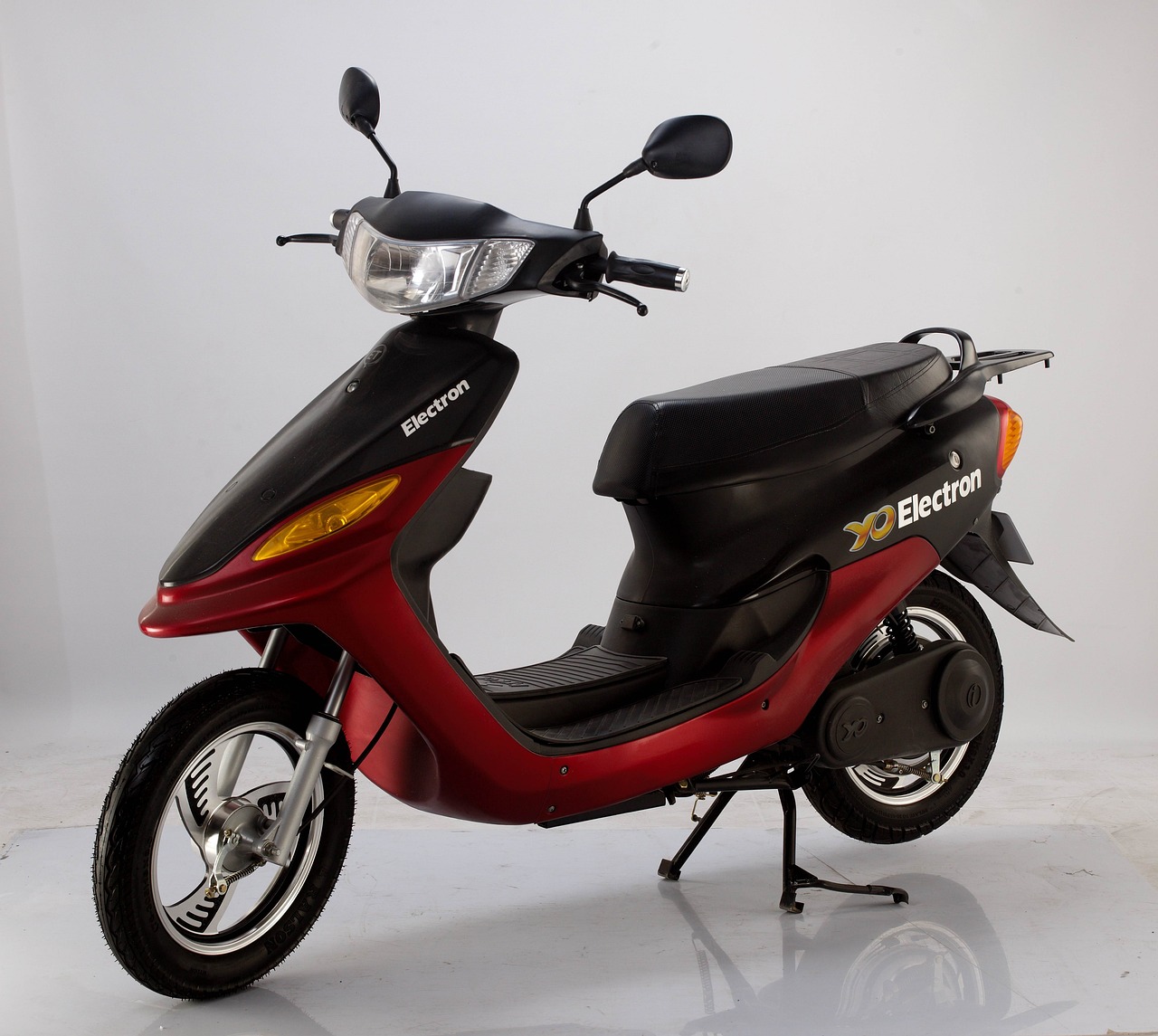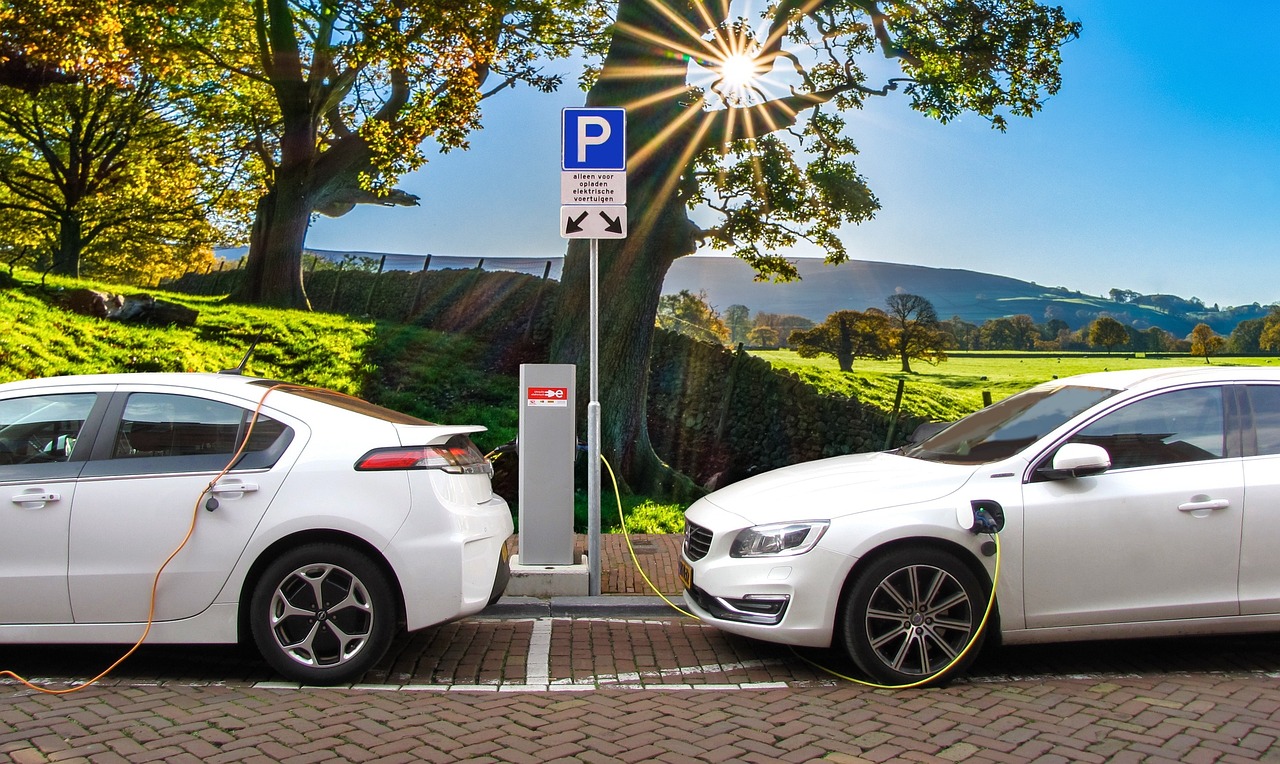This article delves into the benefits, tips, and considerations for utilizing electric bikes for long-distance travel, providing a thorough understanding of how to maximize your journey.
Understanding Electric Bikes
Electric bikes, or e-bikes, merge traditional cycling with electric assistance, presenting an efficient and environmentally friendly option for long-distance travel. Familiarity with their components and features is crucial for optimal use.
Benefits of Electric Bikes for Long Distances
- Reduced Fatigue: E-bikes enable riders to cover longer distances with less physical strain.
- Increased Speed: The electric motor assists in maintaining higher speeds, allowing for quicker travel.
- Versatility: E-bikes can handle various terrains, making them suitable for diverse routes.
Battery Life Considerations
Understanding battery life is essential for planning long-distance trips. Factors such as terrain and rider weight can influence battery performance. Riders should assess their route and adjust assist levels accordingly.
Charging Options on the Go
Identifying charging stations along your route can significantly help in managing battery life. Many e-bike enthusiasts plan their journeys around accessible charging points to avoid running out of power.
Choosing the Right Electric Bike
Choosing the right e-bike is critical for long-distance travel. Considerations include:
- Bike Type: City, mountain, and hybrid models each offer unique features.
- Motor Power: Higher wattage motors provide better performance.
- Battery Capacity: Larger batteries allow for longer rides without recharging.
Planning Your Route
Effective route planning is vital. Consider terrain, elevation changes, and available amenities to ensure a smooth journey. Utilizing GPS and mapping apps can enhance your planning, helping identify bike-friendly paths and charging stations.
Safety Tips for Long-Distance Riding
Safety is paramount. Implementing best practices can help prevent accidents:
- Wear Proper Gear: Helmets and reflective clothing improve visibility and protection.
- Know Local Laws: Familiarize yourself with traffic regulations regarding e-bikes to ensure compliance.
Maintenance and Care for Your E-Bike
Regular maintenance is essential for the longevity and performance of your e-bike. Conduct routine checks such as:
- Tire pressure
- Brake functionality
- Battery health
Conclusion: Embracing Electric Bikes for Adventure
Electric bikes offer an exciting and sustainable option for long-distance travel. By understanding their features, planning effectively, and prioritizing safety, riders can enjoy memorable adventures on two wheels.

Understanding Electric Bikes
Electric bikes, commonly known as e-bikes, represent a revolutionary fusion of traditional cycling and modern technology. By integrating electric propulsion, these vehicles provide an efficient and eco-friendly mode of transportation, particularly advantageous for long-distance travel. This article delves into the various components, features, and operational tips that every e-bike rider should know to maximize their experience.
At the core of an e-bike’s functionality is its electric motor, which assists the rider by providing additional power, especially on inclines or during extended rides. Riders can choose different levels of assistance, allowing for a customizable experience based on individual fitness levels and terrain. Understanding the battery capacity is also crucial; it determines how far you can travel on a single charge. Most e-bikes come equipped with lithium-ion batteries that can offer ranges from 20 to over 100 miles, depending on usage.
Additionally, e-bikes generally feature various gearing systems that enhance performance on diverse terrains. Riders should familiarize themselves with these systems to optimize their ride, especially when tackling steep hills or uneven surfaces.
- Frame Design: E-bikes are available in multiple styles, including step-through frames for easy mounting and dismounting.
- Braking Systems: Quality brakes are essential for safety; many e-bikes use hydraulic disc brakes for reliable stopping power.
- Weight Consideration: E-bikes tend to be heavier than traditional bikes due to their motors and batteries, influencing handling and portability.
Furthermore, understanding the legal regulations surrounding e-bikes is crucial. Different regions may have specific laws regarding where and how e-bikes can be used, including speed limits and helmet requirements.
In conclusion, e-bikes offer an innovative solution for long-distance travel, combining the joy of cycling with the benefits of electric assistance. By familiarizing oneself with their components and features, riders can enjoy a more comfortable, efficient, and enjoyable biking experience.

Benefits of Electric Bikes for Long Distances
Electric bikes, or e-bikes, have transformed the way we approach long-distance travel. They offer a range of benefits that cater to both novice and seasoned cyclists, making them an increasingly popular choice for adventurous travelers.
- Reduced Fatigue: One of the most significant advantages of e-bikes is their ability to reduce rider fatigue. The electric motor provides assistance, allowing cyclists to maintain a steady pace without exhausting themselves. This is particularly beneficial during long rides, where maintaining energy levels is crucial.
- Increased Speed: E-bikes allow riders to travel faster compared to traditional bicycles. This increased speed means you can cover more ground in less time, making it possible to explore more destinations during your journey.
- Ability to Tackle Challenging Terrains: With the help of electric motors, e-bikes can easily navigate steep hills and rough terrains that might be daunting on a regular bike. This capability opens up a wider range of routes and scenic trails for long-distance travel.
- Eco-Friendly Transportation: E-bikes are an environmentally friendly alternative to cars and other motorized vehicles. They produce zero emissions, making them a sustainable choice for long-distance travel.
- Cost-Effective Travel: While the initial investment may be higher than traditional bicycles, e-bikes can save money on fuel and maintenance costs over time. Additionally, they often allow for free parking and can reduce the need for public transportation.
In conclusion, the benefits of using electric bikes for long-distance travel are numerous and impactful. From reducing fatigue to enhancing speed and tackling challenging terrains, e-bikes provide an exciting and practical solution for travelers looking to explore the world on two wheels. As more people recognize these advantages, e-bikes are likely to become a staple in long-distance cycling adventures.
Enhanced Speed and Efficiency
is one of the primary attractions of electric bikes, especially for those considering long-distance travel. These innovative machines are designed to significantly boost travel speed, enabling riders to cover greater distances in a fraction of the time it would take on a traditional bicycle.
With the integration of electric propulsion, e-bikes allow riders to easily maintain higher speeds without the same level of physical exertion. This is particularly advantageous for individuals who may not be accustomed to cycling long distances or who want to arrive at their destination without being exhausted. In fact, studies show that e-bike users can travel up to 50% faster than their non-electric counterparts on similar routes.
Moreover, the ability to adjust the level of electrical assistance means that riders can tailor their experience based on their fitness level and the terrain they are navigating. For instance, when tackling steep hills or rough terrains, the added power from the motor can make a significant difference, allowing riders to conquer challenging landscapes that may have been daunting otherwise.
Additionally, e-bikes are equipped with features that enhance overall efficiency. Many models come with advanced battery management systems that optimize power usage, ensuring that riders can maximize their range. This efficiency is crucial for long journeys, where managing time and energy becomes essential. Riders can plan their trips more effectively, knowing they can cover greater distances without the constant worry of fatigue.
In conclusion, the enhanced speed and efficiency provided by electric bikes not only make them a practical choice for long-distance travel but also transform the riding experience, allowing for enjoyable and less strenuous journeys. Embracing e-bikes opens up a world of possibilities for adventure seekers and commuters alike.
Battery Life Considerations
are crucial for anyone planning long-distance travel on electric bikes. Understanding how to manage your battery effectively can make the difference between a successful journey and an unexpected halt. Here, we will explore the key factors that influence battery life and offer practical tips for optimizing your e-bike’s performance.
- Terrain: Different terrains can significantly impact battery consumption. Steep hills and rough trails require more power, whereas flat surfaces allow for easier riding. Always consider your route’s elevation and surface type when estimating battery usage.
- Rider Weight: The weight of the rider and any additional gear can affect how hard the motor has to work. Heavier loads may drain the battery faster, so be mindful of what you carry.
- Assist Levels: Most electric bikes come with adjustable assist levels. Using lower assist settings can prolong battery life, especially on flat terrain, while higher settings may be necessary for challenging climbs.
- Speed: Riding at higher speeds may also lead to increased battery consumption. Finding a balance between speed and battery efficiency can extend your range.
- Weather Conditions: Wind resistance and temperature can affect battery performance. Riding against strong winds or in extreme temperatures may require more energy, so plan accordingly.
To ensure you have enough power for your journey, consider the following tips:
- Plan Your Route: Use mapping tools to find bike-friendly paths and charging stations along the way.
- Monitor Battery Levels: Regularly check your battery status to avoid running out of power unexpectedly.
- Charge Wisely: If possible, charge your battery during breaks to extend your range throughout the day.
In conclusion, understanding the various factors that influence battery life is essential for planning long-distance trips on electric bikes. By considering terrain, rider weight, assist levels, and other elements, you can ensure a smooth and enjoyable journey.
Charging Options on the Go
are essential for electric bike riders, especially those embarking on long-distance journeys. Proper planning and awareness of charging stations can significantly enhance the riding experience and ensure that riders do not find themselves stranded due to a depleted battery.
When preparing for a long ride, it is crucial to identify charging stations along your route. This proactive approach allows e-bike users to manage their battery life effectively and ensures that they can recharge when necessary. Many riders strategically plan their trips around accessible charging points, which helps them avoid the anxiety of running out of power in remote areas.
Here are some tips for effectively utilizing charging options during your travels:
- Use Navigation Apps: Many GPS and mapping applications now include features that highlight charging stations. These tools can help you locate nearby charging points in real-time, allowing for better route planning.
- Research Charging Station Types: Charging stations can vary widely in terms of the power they provide. Familiarize yourself with different types of chargers, such as Level 1, Level 2, and fast chargers, to understand how long you might need to wait for a full charge.
- Plan Breaks: Incorporate charging stops into your itinerary. Not only does this allow you to recharge your bike, but it also provides a great opportunity to rest, hydrate, and enjoy the scenery.
- Check Charging Availability: Before setting out, verify that the charging stations you plan to use are operational and accessible. Some stations may require a membership or have limited hours of service.
By taking the time to identify and plan for charging options, e-bike riders can enjoy a more stress-free and enjoyable journey. This foresight not only maximizes battery life but also enhances the overall travel experience, allowing you to focus on the adventure ahead.
Comfort and Ergonomics
play a crucial role in ensuring an enjoyable long-distance riding experience on electric bikes. When embarking on extended journeys, the design and features of the e-bike can significantly impact your comfort level and overall enjoyment.
Electric bikes are engineered with ergonomic features that cater to the needs of long-distance riders. Proper seating is essential; a well-cushioned seat that supports your posture can reduce fatigue and discomfort during long rides. Riders should look for seats that offer adequate padding and adjustability to suit their body type.
Another important aspect is the handlebar adjustment. Handlebars that are positioned correctly can alleviate strain on your back and shoulders. Riders should ensure their handlebars are at a comfortable height, allowing for a natural arm position. This adjustment can help maintain a relaxed riding posture, which is vital for longer journeys.
Additionally, the frame geometry of the e-bike contributes to its overall comfort. Bikes designed with a relaxed geometry allow for a more upright riding position, which can reduce stress on the lower back. Riders should consider test-riding different models to find one that feels right for their body.
Furthermore, vibration dampening features, such as wider tires and suspension systems, can significantly enhance the riding experience. These features help absorb shocks from uneven terrain, making long rides smoother and more enjoyable.
In summary, prioritizing comfort and ergonomics is essential for anyone planning long-distance travel on an electric bike. By ensuring proper seating, handlebar adjustments, and considering frame geometry and vibration dampening features, riders can enhance their overall experience and enjoy their journeys to the fullest.

Choosing the Right Electric Bike
is a vital step for anyone considering long-distance travel. With the growing popularity of electric bikes (e-bikes), selecting the right model can significantly enhance your riding experience. This article will explore essential factors to consider when making your choice, ensuring you find the perfect e-bike tailored to your needs.
When embarking on long journeys, understanding the various types of electric bikes is crucial. Here are some common categories:
- City E-Bikes: Ideal for urban commuting, these bikes are lightweight and designed for smooth rides on paved roads.
- Mountain E-Bikes: Built for rugged terrains, they feature robust frames, powerful motors, and enhanced suspension systems.
- Hybrid E-Bikes: Combining features from both city and mountain bikes, hybrids offer versatility for various riding conditions.
Another critical factor is the motor power. E-bikes typically range from 250W to 750W motors. A more powerful motor can provide better acceleration and the ability to tackle steep hills, making it essential for longer rides. Additionally, consider the battery capacity. A larger battery not only extends the range but also enhances performance, especially on challenging routes.
Frame size is another important consideration. A properly sized frame ensures comfort and control during long rides. Riders should test different sizes to find one that fits their height and riding style. Furthermore, features like adjustable seats and handlebars can significantly enhance comfort during extended journeys.
In conclusion, selecting the right electric bike involves understanding various factors such as bike type, motor power, and frame size. By considering these elements, you can ensure a comfortable and efficient travel experience, allowing you to enjoy the journey to its fullest.
Types of Electric Bikes
Electric bikes, commonly known as e-bikes, have gained immense popularity due to their versatility and efficiency. They come in various types, each designed to cater to different riding styles and terrains. Below, we explore the main categories of electric bikes and their unique features.
- City Electric Bikes: These bikes are perfect for urban commuting. They typically feature a lightweight frame, comfortable seating, and accessories like racks and fenders. City e-bikes are designed for smooth rides on paved roads, making them ideal for daily errands and short commutes.
- Mountain Electric Bikes: Built for off-road adventures, mountain e-bikes come equipped with robust frames, wider tires, and powerful motors. They are designed to tackle rugged terrains, steep inclines, and rough trails, providing riders with the necessary support and stability during challenging rides.
- Hybrid Electric Bikes: Combining features from both city and mountain bikes, hybrid e-bikes offer versatility for various riding conditions. They are suitable for both paved roads and light off-road trails, making them an excellent choice for riders who enjoy diverse landscapes.
- Folding Electric Bikes: Ideal for those with limited storage space or for commuters who need to take their bike on public transport, folding e-bikes are compact and lightweight. They can be easily folded and stored, offering convenience without sacrificing performance.
- Fat Tire Electric Bikes: These bikes are equipped with oversized tires that provide enhanced traction and stability on soft or uneven surfaces, such as sand or snow. Fat tire e-bikes are perfect for adventurous riders looking to explore diverse terrains.
Understanding the different types of electric bikes is crucial for selecting the right model that fits your riding needs and preferences. Each category offers unique features that enhance the riding experience, whether you’re commuting through the city or exploring off-road trails.
Motor and Battery Specifications
play a crucial role in the performance of electric bikes, especially for those planning long-distance journeys. Understanding these specifications can significantly enhance your riding experience and ensure that you choose the right e-bike for your needs.
When considering an e-bike for long distances, it’s essential to focus on two main components: the motor power and the battery capacity. A higher wattage motor typically translates to more power, which is particularly beneficial when tackling steep hills or rough terrains. For instance, motors rated at 750 watts or more can provide the necessary torque to maintain speed and efficiency, even when carrying additional weight.
On the other hand, the battery capacity is equally important. Measured in amp-hours (Ah), a larger battery allows for longer ride times without the need for frequent recharging. For long-distance travel, a battery with a capacity of at least 500 Wh is recommended, as it can support extended rides, particularly when using higher assist levels.
| Specification | Importance |
|---|---|
| Motor Wattage | Higher wattage provides better performance, especially on inclines. |
| Battery Capacity (Wh) | Larger capacity ensures longer rides without frequent charging. |
Additionally, it’s important to consider the efficiency of the motor and how it interacts with the battery. Some e-bikes feature advanced technology that optimizes energy usage, allowing riders to maximize their range. Riders should also factor in their own weight and riding style, as these can significantly impact battery life and overall performance.
In conclusion, understanding motor power and battery capacity is vital when selecting an e-bike for long-distance travel. By prioritizing these specifications, riders can enjoy a more efficient and enjoyable journey, making the most out of their electric biking experience.

Planning Your Route
is a critical aspect of ensuring a successful long-distance journey on an electric bike. Proper route planning not only enhances your riding experience but also addresses potential challenges that may arise during your travels. Here are some key considerations to help you effectively plan your route:
- Assess the Terrain: Understanding the type of terrain you will encounter is vital. Will you be riding on flat roads, hilly areas, or off-road trails? Each terrain type presents unique challenges and requires different levels of effort.
- Elevation Changes: Consider elevation changes along your route. Climbing steep hills can drain your battery quickly, so it’s essential to plan your route to include flatter sections whenever possible.
- Available Amenities: Identify rest stops, charging stations, and food options along your route. Planning breaks can help you recharge both your bike and yourself, making for a more enjoyable ride.
- Distance and Time: Calculate the total distance and estimate the time needed for your journey. This will help you gauge your endurance and plan for adequate rest periods.
- Weather Conditions: Check the weather forecast before setting out. Rain, wind, and extreme temperatures can affect your ride, so be prepared for changing conditions.
- Navigation Tools: Utilize GPS and mapping applications designed for cyclists. These tools can help you identify bike-friendly routes and avoid busy roads, enhancing your safety and enjoyment.
By considering these factors, you can create a well-thought-out route that maximizes your enjoyment and minimizes potential obstacles. Effective route planning is not just about reaching your destination; it’s about enjoying the journey along the way.
Using Navigation Tools
In the age of technology, navigation tools have become indispensable for riders embarking on long-distance journeys with electric bikes. Utilizing GPS and mapping applications not only enhances route planning but also ensures a more enjoyable and efficient travel experience. Here’s how these tools can transform your biking adventures:
- Identifying Bike-Friendly Paths: One of the primary advantages of using navigation tools is the ability to find bike-friendly routes. These apps often highlight dedicated bike lanes, off-road trails, and paths that prioritize cyclist safety, allowing riders to avoid busy roads.
- Locating Charging Stations: For electric bike enthusiasts, knowing where to find charging stations along the route is crucial. Many mapping apps provide real-time information on nearby charging points, enabling riders to plan their stops effectively and avoid running out of battery power.
- Exploring Points of Interest: Navigation tools can also enrich your journey by showcasing various points of interest along the route. Whether it’s a scenic viewpoint, a local cafe, or historical landmarks, these features can enhance the overall travel experience.
- Real-Time Traffic Updates: Many GPS applications offer real-time traffic updates, allowing riders to adjust their routes based on current conditions. This feature is particularly beneficial in urban areas where traffic congestion can impact travel time.
- Customizable Routes: Riders can customize their routes based on personal preferences, such as avoiding steep hills or selecting the most scenic paths. This flexibility allows for a more personalized riding experience.
In conclusion, incorporating navigation tools into your long-distance electric bike travels can significantly enhance your journey. By identifying bike-friendly paths, locating charging stations, and discovering interesting stops along the way, riders can enjoy a seamless and fulfilling experience on their electric bikes.
Weather Considerations
When embarking on long-distance rides, weather conditions can play a crucial role in the overall experience. Understanding how various weather factors can affect your journey is essential for ensuring both comfort and safety.
First and foremost, it is important to monitor weather forecasts before your ride. Sudden changes in weather can lead to unexpected challenges, such as rain, wind, or extreme temperatures. Here are some key weather elements to consider:
- Temperature: Riding in extreme heat or cold can lead to discomfort and health risks. Dress appropriately in layers to adapt to changing temperatures.
- Rain: Wet conditions can make roads slippery and reduce visibility. Invest in waterproof gear and consider using tires designed for wet conditions.
- Wind: Strong winds can significantly impact your speed and energy levels. Plan your route to minimize exposure to headwinds or seek shelter during strong gusts.
- Sun Exposure: Prolonged exposure to the sun can lead to dehydration and sunburn. Use sunscreen, wear protective clothing, and stay hydrated.
Additionally, it is wise to prepare for changing weather during your ride. Carrying a compact poncho or windbreaker can provide protection against unexpected rain or wind. Always have a backup plan in case conditions worsen, such as knowing nearby shelters or alternative routes.
In conclusion, being aware of weather conditions and preparing accordingly can greatly enhance your long-distance riding experience. By taking the time to understand and plan for the weather, you can ensure a safer and more enjoyable journey.

Safety Tips for Long-Distance Riding
When it comes to riding electric bikes for long distances, safety should always be a top priority. Implementing best practices can greatly reduce the risk of accidents and ensure a secure riding experience throughout your journey. Below are some essential safety tips to consider.
- Wear Protective Gear: Always wear a helmet and consider additional protective gear such as gloves and knee pads. This not only enhances your safety but also increases your visibility to other road users.
- Stay Visible: Use reflective clothing and accessories, especially when riding during low-light conditions. Equip your bike with lights and reflectors to ensure you are seen by motorists.
- Follow Traffic Rules: Familiarize yourself with local traffic laws regarding electric bikes. Adhering to these rules can prevent accidents and ensure a smoother ride.
- Plan Your Route: Before embarking on your journey, plan your route carefully. Use maps and GPS tools to identify bike-friendly paths and avoid busy roads whenever possible.
- Stay Hydrated and Take Breaks: Long rides can be physically demanding. Ensure you stay hydrated and take regular breaks to rest and assess your condition.
- Check Your Bike: Before starting your ride, conduct a thorough check of your bike. Inspect the brakes, tires, and battery to ensure everything is in optimal condition.
- Be Aware of Weather Conditions: Monitor weather forecasts and be prepared for sudden changes. Riding in adverse weather can increase the risk of accidents.
- Ride at a Safe Speed: Although e-bikes allow for increased speed, always ride at a pace that feels comfortable and safe for you, especially in unfamiliar areas.
By following these safety tips, you can enhance your riding experience and enjoy the benefits of long-distance travel on your electric bike while minimizing risks.
Wearing Proper Gear
is not just a recommendation; it is a necessity for anyone embarking on long-distance rides, especially when navigating through diverse traffic conditions. The importance of appropriate safety gear cannot be overstated, as it plays a crucial role in ensuring both visibility and protection for riders.
When you are on the road for extended periods, the right gear can make a significant difference in your overall safety and comfort. Here are some essential items to consider:
- Helmets: A well-fitted helmet is your first line of defense against head injuries. Make sure it meets safety standards and is comfortable for long wear.
- Reflective Clothing: Wearing reflective or bright-colored clothing enhances your visibility to other road users, particularly in low-light conditions. This is especially crucial during dawn or dusk rides.
- Gloves: Protective gloves not only provide grip and comfort but also protect your hands in case of a fall.
- Protective Eyewear: Sunglasses or goggles shield your eyes from wind, debris, and harmful UV rays, allowing for a clearer vision on the road.
- Weather-Appropriate Gear: Depending on the climate, invest in weather-resistant jackets and pants to keep you dry and comfortable during unexpected rain or wind.
Additionally, it is important to consider the fit and comfort of your gear. Ill-fitting equipment can lead to distractions or discomfort, which may compromise your safety. Always opt for gear that allows for a full range of motion and is breathable to prevent overheating during long rides.
In summary, equipping yourself with the proper safety gear is essential for a successful and safe long-distance riding experience. By prioritizing visibility and protection through the right choices, you can enjoy your journey with greater peace of mind.
Understanding Local Traffic Laws
is crucial for anyone using electric bikes (e-bikes) for long-distance travel. Each region has its own set of traffic regulations, and being aware of these can significantly enhance your safety and compliance while riding.
When you ride an e-bike, it is essential to recognize that local laws may vary widely. For instance, some areas may have specific speed limits for e-bikes, while others might restrict their use on certain paths or sidewalks. To ensure a safe and enjoyable ride, consider the following points:
- Research Local Regulations: Before embarking on your journey, take the time to research the traffic laws in the regions you plan to visit. Websites of local transportation departments often provide detailed information.
- Helmet Laws: Many places require riders to wear helmets, especially for those under a certain age. Adhering to these laws not only keeps you safe but also helps you avoid fines.
- Age Restrictions: Some areas have age restrictions for e-bike riders, which can vary from state to state or city to city. Ensure that you are compliant with these regulations.
- Bike Lane Usage: Familiarize yourself with where e-bikes are allowed to ride. In some regions, e-bikes are permitted only in designated bike lanes, while in others, they may share the road with motor vehicles.
- Equipment Requirements: Check if there are specific equipment requirements for e-bikes, such as lights, reflectors, or bells, which can enhance visibility and safety.
By being informed about local traffic laws, you not only enhance your own safety but also contribute to a safer environment for all road users. Understanding these regulations can prevent accidents and ensure a more enjoyable riding experience.
In conclusion, taking the time to familiarize yourself with the local traffic laws regarding e-bikes is a vital step in ensuring compliance and safety. This knowledge empowers you to ride confidently, knowing you are adhering to the rules of the road.

Maintenance and Care for Your E-Bike
Regular maintenance is essential for the longevity and performance of electric bikes. By understanding basic care routines, riders can prevent breakdowns and ensure a smooth experience during long-distance travel.
Importance of Routine Maintenance
Just like any vehicle, electric bikes require consistent care to function optimally. A well-maintained e-bike not only enhances performance but also maximizes safety. Here are some key areas to focus on:
- Tire Care: Check tire pressure regularly. Properly inflated tires improve efficiency and ensure a comfortable ride.
- Brake Inspection: Ensure brakes are responsive and in good condition. Regularly inspect brake pads for wear and replace them as necessary.
- Battery Maintenance: Monitor battery health by keeping it charged and avoiding complete discharges. Follow manufacturer guidelines for optimal battery care.
- Chain and Gears: Keep the chain lubricated and clean to prevent wear. Regularly check gear shifting for smooth operation.
Pre-Trip Checks
Before embarking on a long journey, conduct thorough checks:
1. Inspect tire pressure.2. Test brakes for functionality.3. Check battery levels.4. Ensure lights and signals are operational.
Cleaning and Storage
Proper cleaning and storage practices can significantly prolong the life of your e-bike:
- Cleaning: Use a damp cloth to wipe down the frame and components. Avoid using high-pressure water as it can damage electrical parts.
- Storage: Store your e-bike in a dry, cool place to prevent rust and degradation. Consider using a cover for added protection.
Conclusion
In summary, regular maintenance is crucial for ensuring the longevity and performance of your electric bike. By following these simple care routines, you can prevent unexpected breakdowns and enjoy your long-distance travels with peace of mind.
Routine Checks Before Long Trips
Before embarking on long journeys with your electric bike, it is crucial to conduct thorough routine checks to ensure a safe and enjoyable ride. These checks are not only essential for your safety but also enhance the overall performance of your bike. Here are some key areas to focus on:
- Tire Pressure: Proper tire pressure is vital for optimal performance. Under-inflated tires can lead to increased rolling resistance, making your ride more strenuous. Conversely, over-inflated tires can cause a harsher ride and increase the risk of a blowout. Always check the manufacturer’s recommended pressure and adjust accordingly.
- Brake Functionality: Ensuring your brakes are in excellent working condition is non-negotiable. Test both front and rear brakes before your trip. If you notice any unusual sounds or feel a lack of responsiveness, it’s essential to address these issues immediately to avoid accidents.
- Battery Health: The battery is the heart of your electric bike. Check the charge level and ensure that the battery is functioning optimally. If you notice a significant drop in performance or if the battery takes longer than usual to charge, it may need servicing or replacement.
- Chain and Gears: Inspect the chain for any signs of wear and ensure it is adequately lubricated. Smooth gear shifting is crucial for maintaining speed and efficiency, especially on long rides.
- Lights and Reflectors: If you plan to ride during dawn or dusk, check that all lights are operational. Visibility is key for safety, so ensure your reflectors are clean and positioned correctly.
By performing these routine checks, you can significantly reduce the risk of mechanical failures and enhance your riding experience. Always remember that a well-maintained bike not only performs better but also provides peace of mind during your adventures.
Cleaning and Storing Your E-Bike
Proper cleaning and storage practices are essential for prolonging the life of your electric bike (e-bike). Just like any other vehicle, e-bikes require regular maintenance to keep them functioning optimally and looking great. This is especially important after long-distance travels, where exposure to dirt, grime, and various weather conditions can take a toll on your bike.
Cleaning Your E-Bike
- Regular Washes: It’s important to wash your e-bike regularly to remove dirt and debris. Use a soft cloth and mild soap, avoiding harsh chemicals that can damage the bike’s components.
- Focus on Key Areas: Pay special attention to the drivetrain, brakes, and battery area. These parts are crucial for performance and should be kept clean to ensure smooth operation.
- Drying: After washing, dry your bike thoroughly to prevent rust and corrosion, especially on metal parts.
Storage Tips for Your E-Bike
- Indoor Storage: Whenever possible, store your e-bike indoors. This protects it from harsh weather conditions that can cause wear and tear.
- Battery Care: If you plan to store your e-bike for an extended period, remove the battery and store it in a cool, dry place. Make sure it is charged to about 50% to maintain battery health.
- Use a Cover: If indoor storage isn’t an option, consider using a bike cover to shield your e-bike from the elements.
By implementing these cleaning and storage practices, you can significantly extend the lifespan of your e-bike, ensuring it remains a reliable companion for all your long-distance adventures.

Conclusion: Embracing Electric Bikes for Adventure
As the world increasingly shifts towards sustainable transportation, electric bikes (e-bikes) have emerged as a thrilling and eco-friendly option for long-distance travel. These innovative vehicles combine the traditional appeal of cycling with modern electric propulsion, allowing riders to explore vast landscapes while minimizing their carbon footprint. To fully embrace the adventure that e-bikes offer, it is essential to understand their features, plan effectively, and prioritize safety.
Understanding the Features of Electric Bikes
- Motor Power: The power of the motor significantly influences the bike’s performance. E-bikes with higher wattage provide better acceleration and can handle steep terrains more efficiently.
- Battery Capacity: A larger battery capacity allows for longer rides without the need for frequent recharging, making it a crucial factor for long-distance journeys.
- Comfort Features: Ergonomically designed seats and handlebars can enhance the riding experience, especially on extended trips.
Planning Your Long-Distance Adventure
Effective route planning is vital for a successful long-distance e-bike journey. Riders should consider the following:
- Terrain and Elevation: Understanding the route’s topography helps in estimating the energy required for the journey.
- Charging Stations: Identifying charging points along the route ensures that the battery remains sufficiently charged throughout the trip.
- Amenities: Planning stops for food and rest can enhance the overall experience.
Prioritizing Safety on the Road
Safety should always be a priority when riding electric bikes. Riders are encouraged to:
- Wear appropriate safety gear, including helmets and reflective clothing.
- Familiarize themselves with local traffic laws to ensure compliance.
- Regularly check the bike’s condition, including tire pressure and brakes, before embarking on long rides.
In conclusion, electric bikes present a remarkable opportunity for adventure seekers looking to travel long distances sustainably. By understanding the features of e-bikes, planning routes wisely, and prioritizing safety, riders can embark on memorable journeys filled with exploration and excitement.
Frequently Asked Questions
- What is an electric bike?
An electric bike, or e-bike, is a bicycle that incorporates an electric motor to assist with pedaling. This combination allows riders to travel longer distances with less effort, making it a great option for those looking to explore more on two wheels.
- How far can I travel on a single charge?
The distance you can travel on a single charge depends on several factors, including the battery capacity, terrain, rider weight, and assist level used. On average, most e-bikes can cover between 20 to 60 miles per charge.
- Do I need a special license to ride an electric bike?
In most regions, you do not need a special license to ride an electric bike. However, it’s important to check local regulations, as some areas may have specific rules regarding e-bike classifications and usage.
- How do I maintain my electric bike?
Maintaining your e-bike involves regular checks on tire pressure, brakes, and battery health. Cleaning the bike after rides and storing it properly can also prolong its life and performance.
- Can I ride my electric bike in the rain?
Yes, most electric bikes are designed to withstand light rain. However, it’s wise to avoid heavy downpours and ensure that electrical components are well-protected. Always check your bike’s specifications for water resistance ratings.












